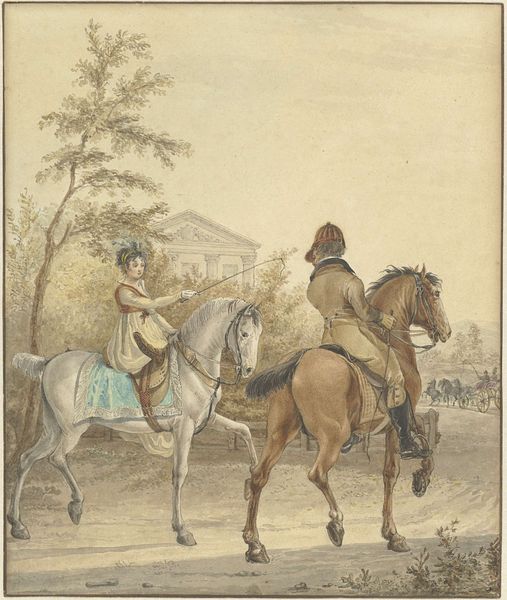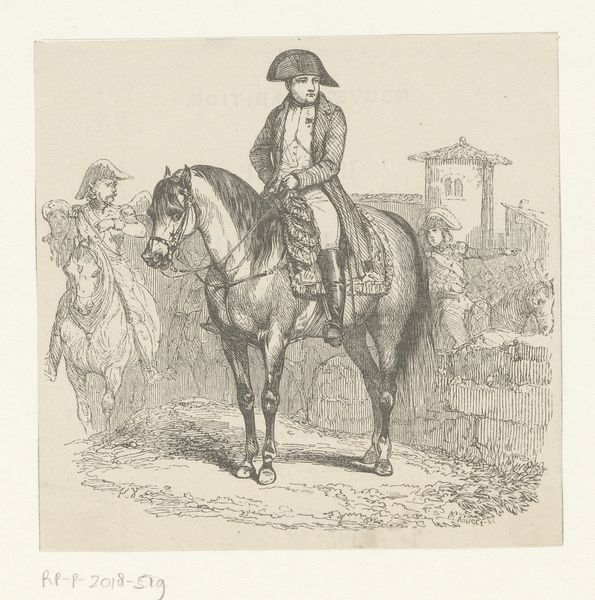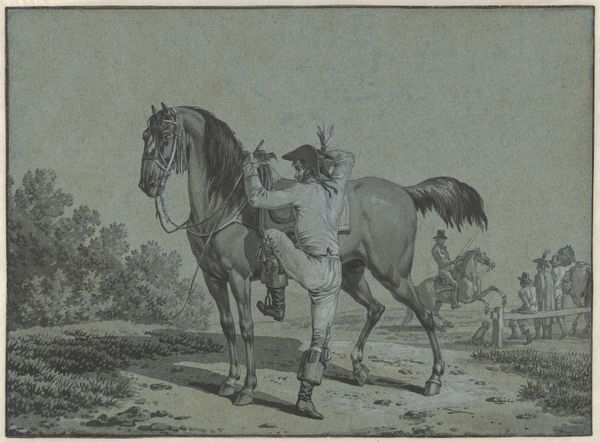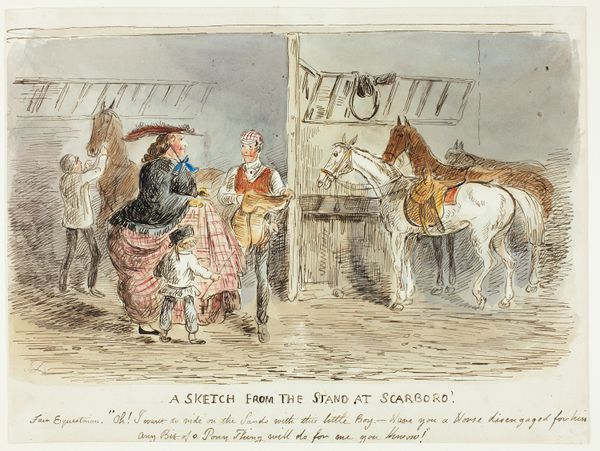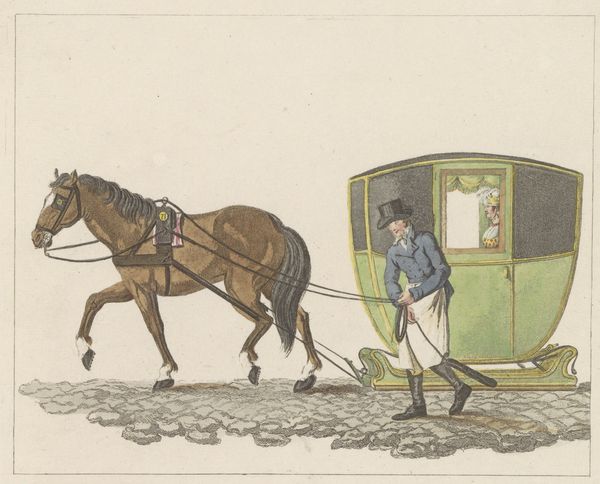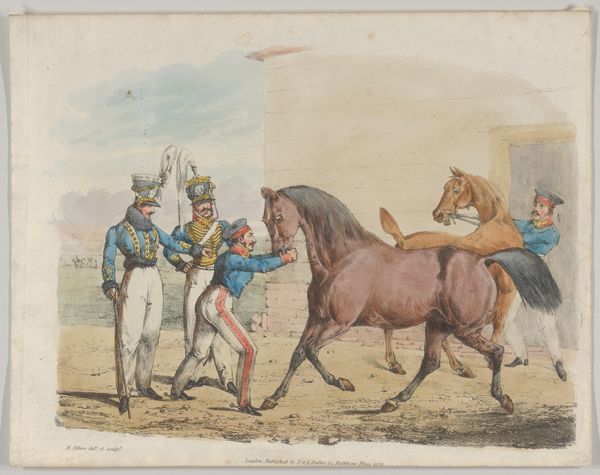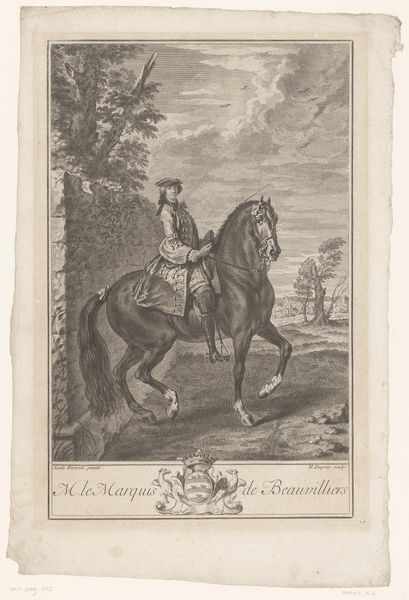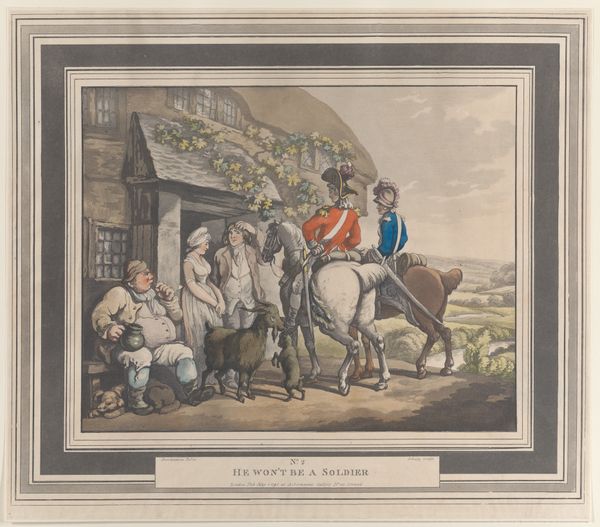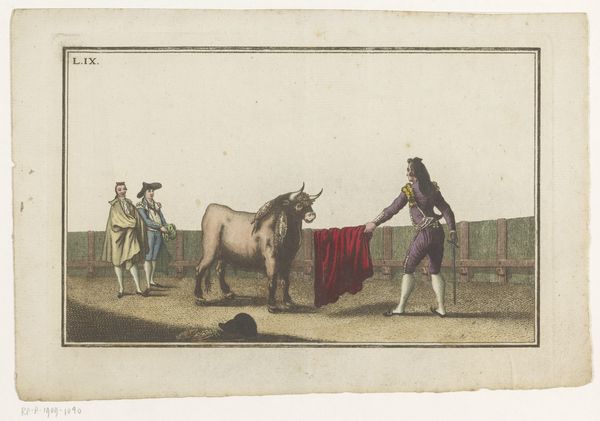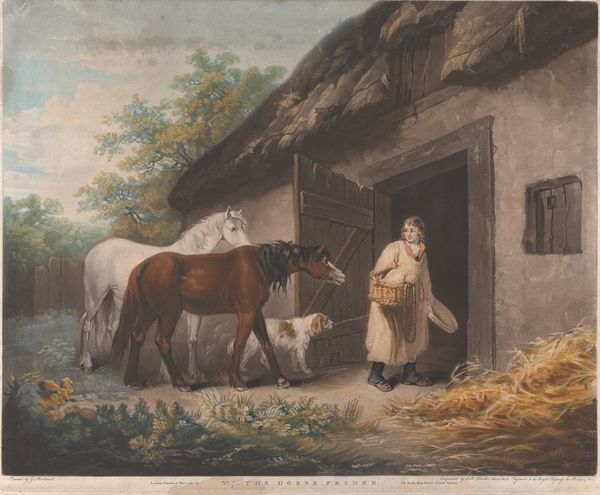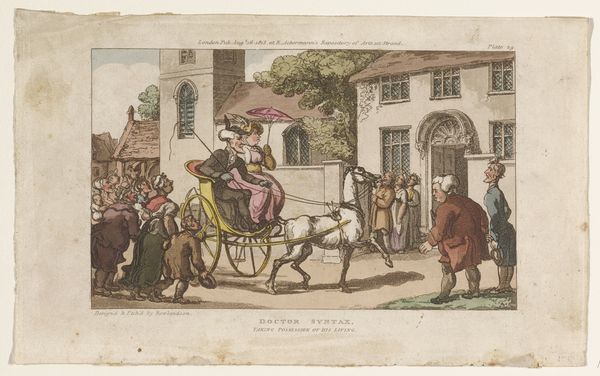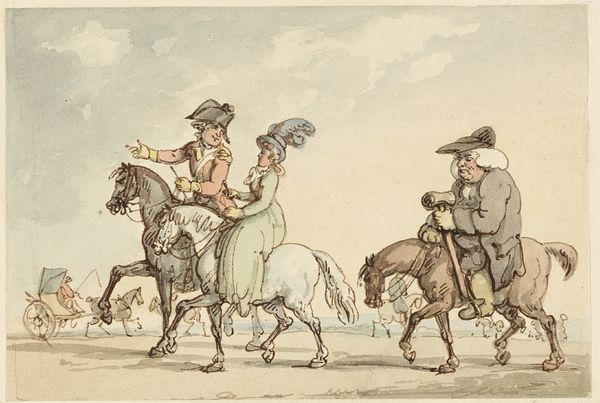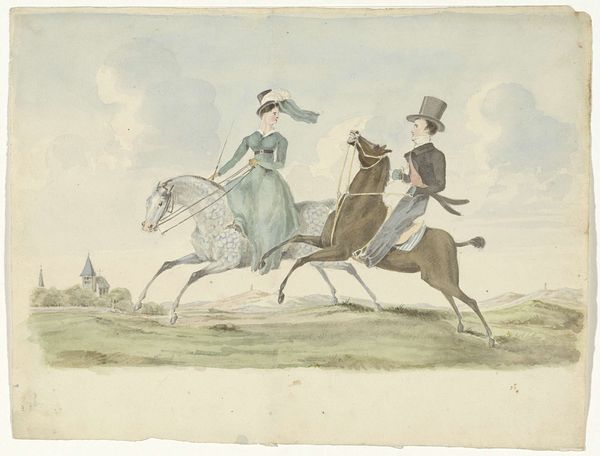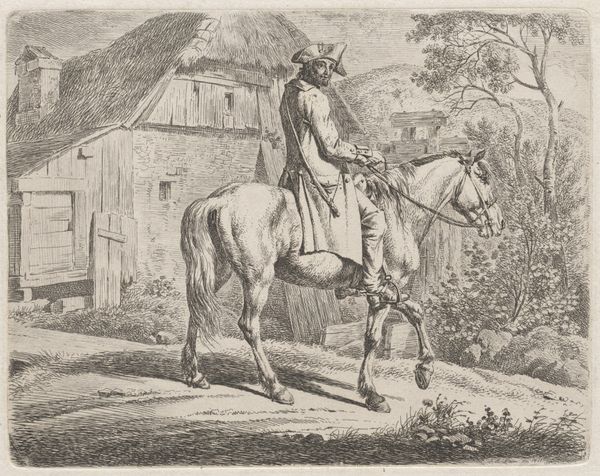
Ein Reiter mit Dreispitz und Zopf, im Hintergrund eine Kanallandschaft
0:00
0:00
drawing, painting, watercolor
#
portrait
#
drawing
#
painting
#
landscape
#
watercolor
#
coloured pencil
#
15_18th-century
#
watercolour illustration
#
genre-painting
Copyright: Public Domain
Editor: So, this watercolour drawing is called "A Rider with a Tricorne and Pigtail, with a Canal Landscape in the Background" by Cornelis Troost. I get a sense of theatricality from the rider, almost as if he's posing on a stage. How would you interpret it? Curator: Looking at this through a materialist lens, I’m drawn to the context of its production. Watercolors were often favored for their portability and relative affordability, making them accessible to a burgeoning middle class. Do you notice the detail given to the rider's attire versus the mundane environment? Editor: I do. His fancy coat and wig really stand out compared to the somewhat drab building behind him and the very bare landscape. Curator: Precisely. This highlights consumption and the performance of status. How might the availability of pigments and the labor involved in creating such a piece inform our understanding of 18th-century Dutch society? Consider the cost of the materials, the time Troost invested... Editor: So, it wasn't just about the image itself, but also about who could afford art, who made it, and what that says about wealth distribution. The pigments, even the paper, represented a certain level of resources and access, right? Curator: Exactly! Furthermore, consider the subject. It's not a grand historical scene, but a rider, likely of some means, perhaps showing off. The act of depicting this lifestyle points to an emerging consumer culture. Does seeing the work this way shift your initial reaction? Editor: Definitely. I still see the theatricality, but now I'm also seeing it as a document of a very specific social moment, revealing details about class and commerce. Curator: Indeed. Art isn't just about beauty; it’s a product embedded in a complex web of social and economic relationships. Editor: It’s fascinating how much context changes what you see. Thanks for opening my eyes to this.
Comments
No comments
Be the first to comment and join the conversation on the ultimate creative platform.
